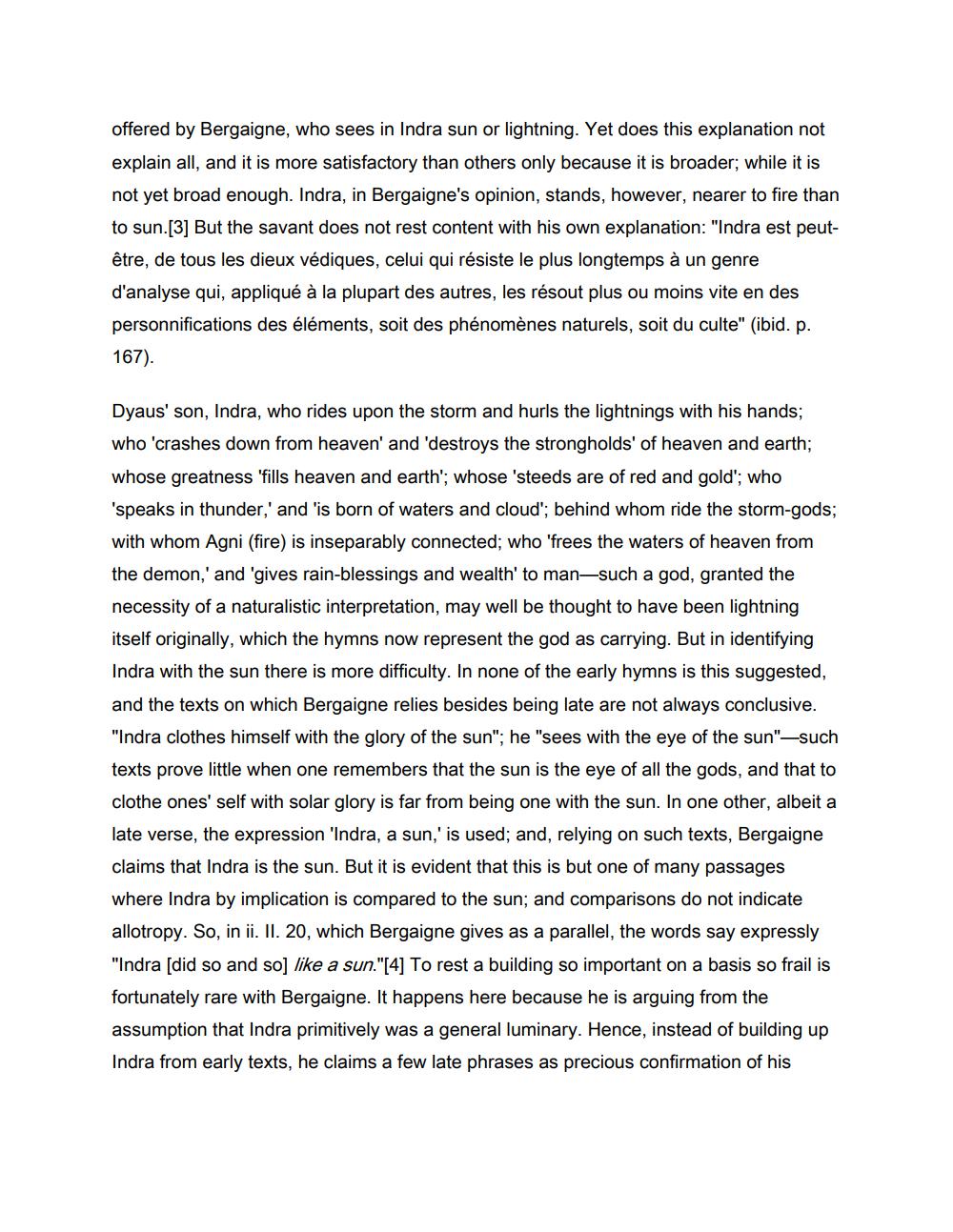________________
offered by Bergaigne, who sees in Indra sun or lightning. Yet does this explanation not explain all, and it is more satisfactory than others only because it is broader; while it is not yet broad enough. Indra, in Bergaigne's opinion, stands, however, nearer to fire than to sun.[3] But the savant does not rest content with his own explanation: "Indra est peutêtre, de tous les dieux védiques, celui qui résiste le plus longtemps à un genre d'analyse qui, appliqué à la plupart des autres, les résout plus ou moins vite en des personnifications des éléments, soit des phénomènes naturels, soit du culte" (ibid. p. 167).
Dyaus' son, Indra, who rides upon the storm and hurls the lightnings with his hands; who 'crashes down from heaven' and 'destroys the strongholds' of heaven and earth; whose greatness 'fills heaven and earth'; whose 'steeds are of red and gold'; who 'speaks in thunder,' and 'is born of waters and cloud', behind whom ride the storm-gods; with whom Agni (fire) is inseparably connected; who 'frees the waters of heaven from the demon,' and 'gives rain-blessings and wealth' to man—such a god, granted the necessity of a naturalistic interpretation, may well be thought to have been lightning itself originally, which the hymns now represent the god as carrying. But in identifying Indra with the sun there is more difficulty. In none of the early hymns is this suggested, and the texts on which Bergaigne relies besides being late are not always conclusive. "Indra clothes himself with the glory of the sun"; he "sees with the eye of the sun"—such texts prove little when one remembers that the sun is the eye of all the gods, and that to clothe ones' self with solar glory is far from being one with the sun. In one other, albeit a late verse, the expression 'Indra, a sun,' is used; and, relying on such texts, Bergaigne claims that Indra is the sun. But it is evident that this is but one of many passages where Indra by implication is compared to the sun, and comparisons do not indicate allotropy. So, in ii. II. 20, which Bergaigne gives as a parallel, the words say expressly "Indra (did so and so] like a sun."[4] To rest a building so important on a basis so frail is fortunately rare with Bergaigne. It happens here because he is arguing from the assumption that Indra primitively was a general luminary. Hence, instead of building up Indra from early texts, he claims a few late phrases as precious confirmation of his




